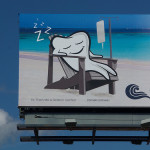General anesthesia is defined as a reversible state of unconsciousness produced by anesthetic agents, with the loss of the sensation of pain throughout the body. These anesthetic agents or drugs, possess a fundamental characteristic is its reversibility, ie once these molecules leave the cell, it returns to its normal state initial condition . General anesthesia is accompanied by loss of protective reflexes in the airway, also may be accompanied by loss of the ability to breathe spontaneously, this depends on the level of depth of anesthesia that a sleep dentist in Chicago will give you.
Meanwhile sedation could be defined as a state induced by a drug or drugs, in which the patient variation in their level of consciousness, this variation is: from mild depressed level of consciousness, in which the patient is drowsy but responds to commands, preserving protective reflexes of the airway, to an intense depression of level of consciousness, in which the patient is unresponsive even to painful stimuli. Protective reflexes may be present or not, it depends if it is a mild sedation, also called conscious or whether it is deep sedation. There is virtually no difference between deep sedation and general anesthesia surface.

INDICATIONS OF GENERAL ANESTHESIA IN DENTISTRY SEDATION
Globally it can be said that general anesthesia is indicated in infants and young children , is also used in adults who prefer this technique have explained despite the possibility of using regional anesthesia. When the surgical procedure is extensive. In patients with mental or psychomotor developmental delay. When no history of allergic or toxic reactions to local anesthetics or when the patient receives anticoagulants.
Specifically in the area of dentistry could specify, which are indications of general anesthesia:
- Children with medical and dental previous experiences iatrogenizantes and where it is not possible to achieve positive communication and cooperation necessary for treatment.
- Patients allergic to local anesthetics: Local anesthetics may cause hypersensitivity reactions in allergic children and adults.
- Children and adults with blood dyscrasias: truncal infiltrative anesthesia can cause bleeding in the lateral pharyngeal space, even while the patient is suitable for dyscrasia therapy.
- Dental disease in children with psychomotor disorders or genetic disorders, which are associated with dental disease and mental retardation or musculoskeletal disorders that prevent conventional treatment with the patient conscious.
- Children with congenital heart disease in which to practice extensive treatment that is involved in the removal of dental septic processes, multiple restorations, or maxillofacial surgery. In children with congenital heart disease the effect of local anesthetics with catecholamines can be harmful.